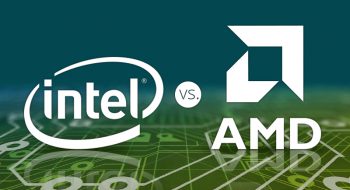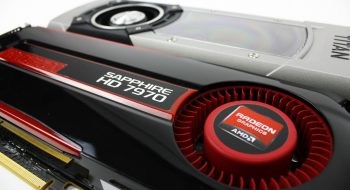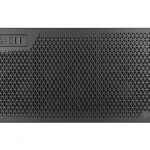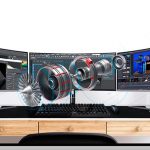Now that we’ve opened up the conversation to what makes top GPU companies (AMD and NVIDIA) different by highlighting the specifics behind what makes each company’s product unique — let’s cover the different tiers or classes of what separates professional and consumer grade GPU’s.
A common conversation topic of current day PC users is the presence of two distinct lines of graphics cards by big manufacturers like NVIDIA. There professional-level cards like the Quadro series are for research and CAD pros; then there are PC game, consumer based cards in the GeForce GPU models. What makes them different?
NVIDIA GeForce
The GeForce desktop cards are generally referred to as GPU’s, video cards or gaming cards, because that is likely going to be their intended use in a custom PC. Although, not all gaming graphics cards are meant for gaming, and, in fact, some even tend to perform similar to workstation cards. The industry’s most popular choice of cards is NVIDIA graphics cards with approximately 75% market share according to Overclockers Club. These cards are broken down as such – lower number titled cards represent smaller, budget oriented cards, while higher numbers represent higher-end, faster gaming cards. It is important to note that most cards in the industry are re-branded and modified by various hardware manufacturers. For instance, NVIDIA designs the chipset otherwise known as the reference design as a baseline GTX series gaming cards which can then be replicated by companies such as Asus, EVGA, GIGABYTE, MSI..etc — These reference cards are then modified with their own specific cooling solutions, GPU fans, air shrouds, and so on – and then sold as a card under that company’s brand name.
NVIDIA Quadro
Unlike the gaming desktop video cards, workstation cards are engineered for specific applications. Typically, they are not designed for gaming or basic computer use. The target market for these cards are AutoCAD designers, 3D professionals, and related visual development industries. If you are configuring a workstation PC for any of the above suggested tasks, you want to get a dedicated workstation card, as it will deliver proper performance for your media editing and performance needs.
NVIDIA currently offers 2 work graphics processors: Quadro and Tesla. The NVIDIA Quadro has a line-up of GPUs aimed at CAD designers, 3D designers and other similar software applications. NVIDIA’s Tesla chipset is meant to be used in large graphical computation usage situations like research centers, chemistry labs and similar math departments might need to use Tesla as its GPU computational performance is unmatched.
A Quadro normally uses a highly modified version of the GPU you would find in any top end GeForce card, only it is equipped to run higher precision math and professional drivers rather than targeted specifically for PC gaming. In gaming, users do not typically care about things like double floating point precision and other hard complex calculations focused strongly on accuracy. Instead, gaming GPUs focus on pixel fill, fast geometry and shading along with texturing rate which are products of additional memory bandwidth, and higher clock speeds with a bunch of shader units working in unison.
Price
So, you might ask, why are professional-level cards so much more expensive? Well professionals have the money to spend on performance based graphics cards when they require ultimate precision and demand results.
Well let’s consider the target audience that both card classes are made for. So why is a card like the 960 or 970 so much cheaper than the higher end NVIDIA Geforce GPUs like the 980? And what does this have to do with a Quadro? This has a lot to do with the maturing timeline in the manufacturing process. Generally, lower end GPUs are priced that way because they are still being researched and technically developed in some way. It is one of the reasons NVIDIA often begins a new generation with a mid-range card. As NVIDIA is experimenting with the fabrication process on the newest GPUs, there are going to be entire batches of chips with components that are not fully developed because they are still testing the best product for the ideal processing results in the whole series of cards. To see development in any industry, professional-grade hardware needs to run through the industry pipeline to weed out the bugs, and provide the consumers with the right “price to performance” ratio. Better professional grade NVIDIA graphics cards enable development to foster growth for the consumer cards and gaming market down the road.
Conclusion
This should wrap up the basic differences among professional and gaming video cards available in the marketplace today. There are plenty of other features and properties to consider, but these are some of the ground-level basics that should give you a better, more clear understanding.









No comments yet